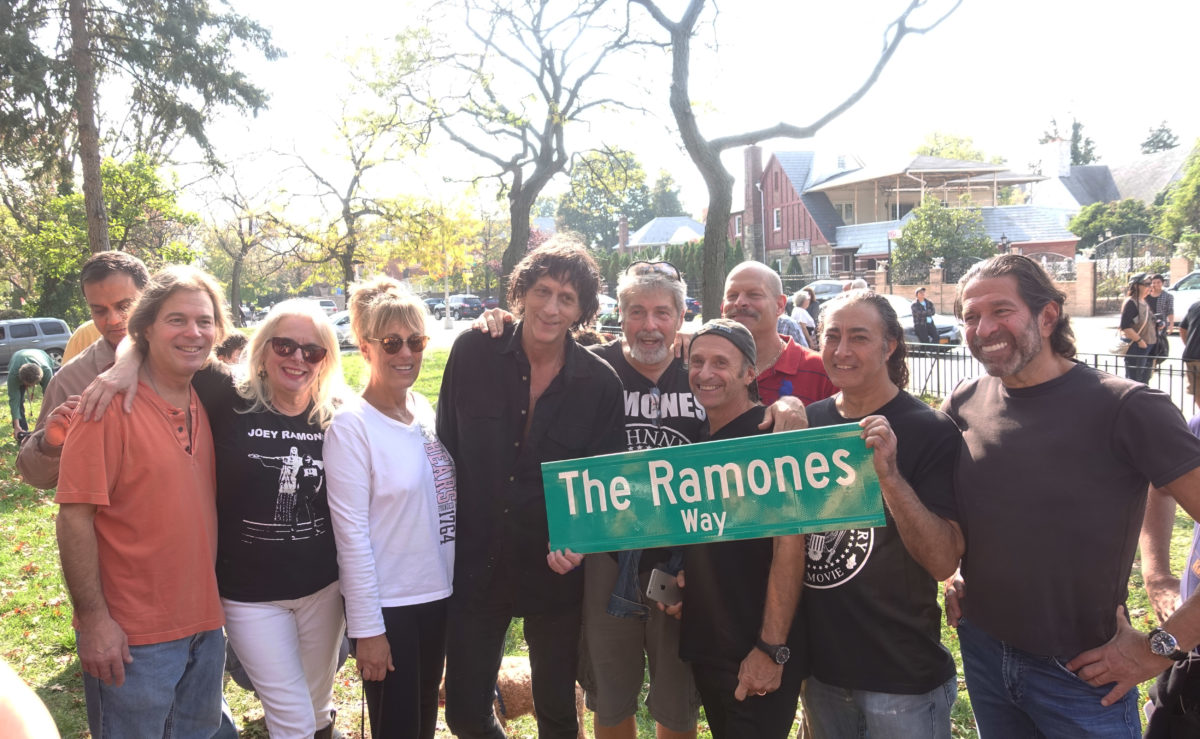Queens Name Explorer project honors notables
Mapping the names of streets, buildings, parks
By Michael Perlman
mperlman@queensledger.com
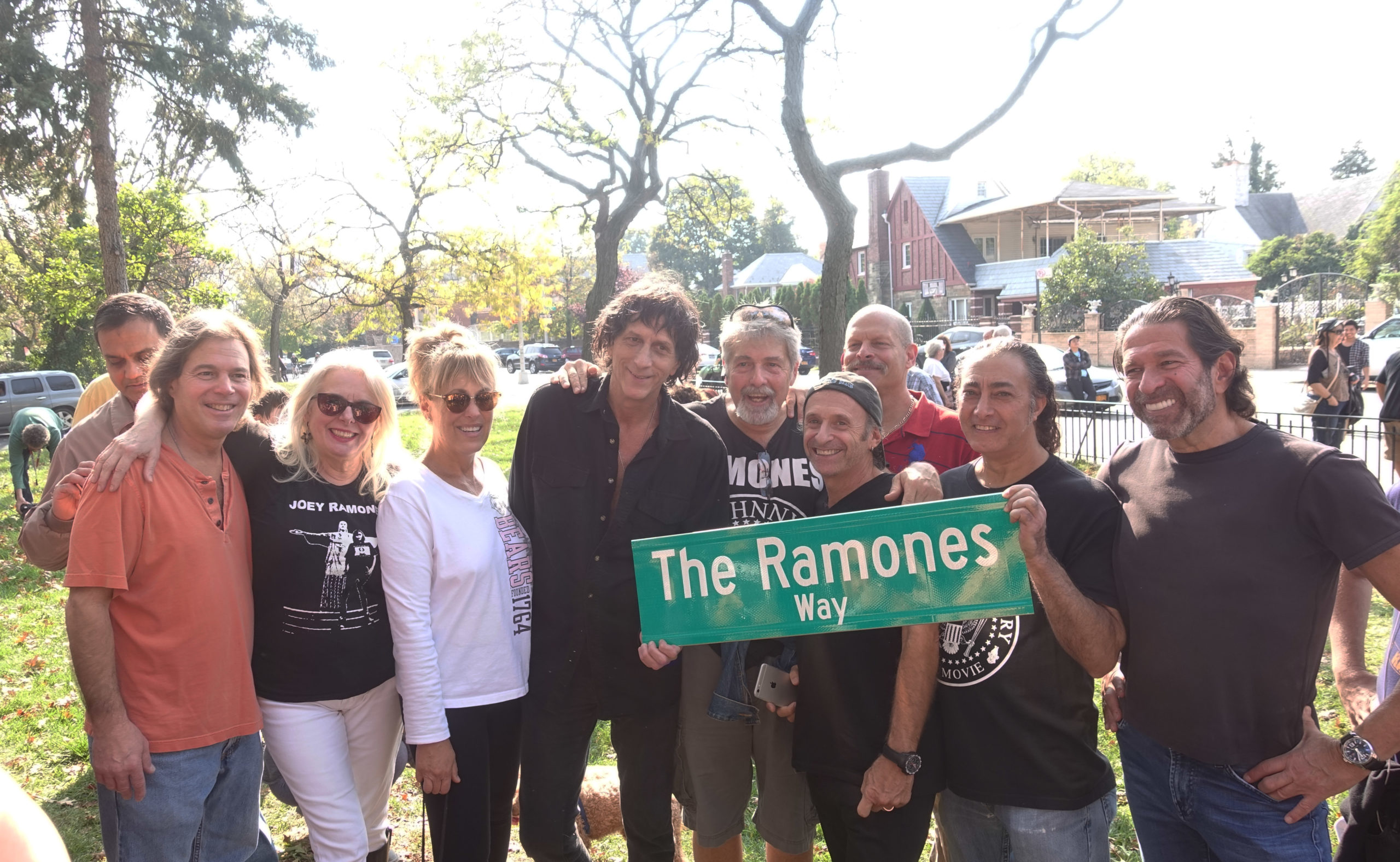
Mickey Leigh, black shirt center, among FHHS grads, The Ramones Way, Oct 2016, Photo by Michael Perlman.
Every day, residents take a stroll, relax in a park, encounter a sculpture, attend school, go to work and take pride in “home sweet home,” but not everyone stops to wonder, “What’s in a name?”
Throughout Queens, a borough that is most culturally diverse and the largest in land area, lies a trail of street names, building names and scenic destinations awaiting rediscovery.
Thanks to the recently launched Queens Name Explorer project, the accomplishments and memory of our ancestors will be honored by telling their story, and the public is invited to participate.
“I believe that the history of Queens is one of the richest histories in America, and the Queens Name Explorer project is helping to preserve this great legacy,” said Jason D. Antos, executive director of the Queens Historical Society and author of seven Queens history books.
He describes the street names of Queens and greater New York City as “fascinating.”
“There is a lot of depth and history behind some of these names, and the public should be educated about who these people or places are,” he continued.
Antos was born in Flushing and is a 38-year resident of Whitestone. Since high school, he has been intrigued by Queens history, and feels there are some mysteries that need to be solved.
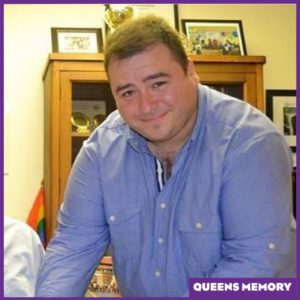
Jason Antos, Queens Historical Society executive director & Queens Memory presenter.
“There are so many names of families and individuals of whom I would love to know about,” he said. “We must preserve our local history to pass down these stories to future generations.”
Jackson Heights resident Natalie M. Milbrodt is the Metadata Services coordinator at the Queens Central Library.
She not only founded and directs the Queens Memory Project, but serves as director of Queens Name Explorer project, its outgrowth.
“Since the Queens Memory Project’s founding in 2010, I lead a talented team of staff and volunteers who recorded approximately 1,000 oral history interviews. We also host countless public events and workshops on local history, memoir and archival preservation,” Milbrodt said.
The twofold mission is to raise awareness of local history collections and to encourage Queens neighbors to contribute their own history to the library.
“Every volunteer who records an oral history interview with a neighbor, friend or relative and shares it with us, has made a contribution to the way future researchers will understand Queens in 2022,” she continued.
The Queens Name Explorer project originated from a dialogue with their technology partner, Urban Archive, about how to explore monuments and other named Queens sites.
“Currently, there’s a national conversation about how the individuals we celebrate in public places with statues and other namings, shape our understanding of what is important to know about the past. There was no single list of honorary namings for schools, streets, parks, and other public places, so we wanted to create one,” Milbrodt said.
Data specialist Angela Miskis was appointed to mine public datasets for places named after individuals, while a team of researchers under Lori Wallach assembles biographical information about each honored notable.
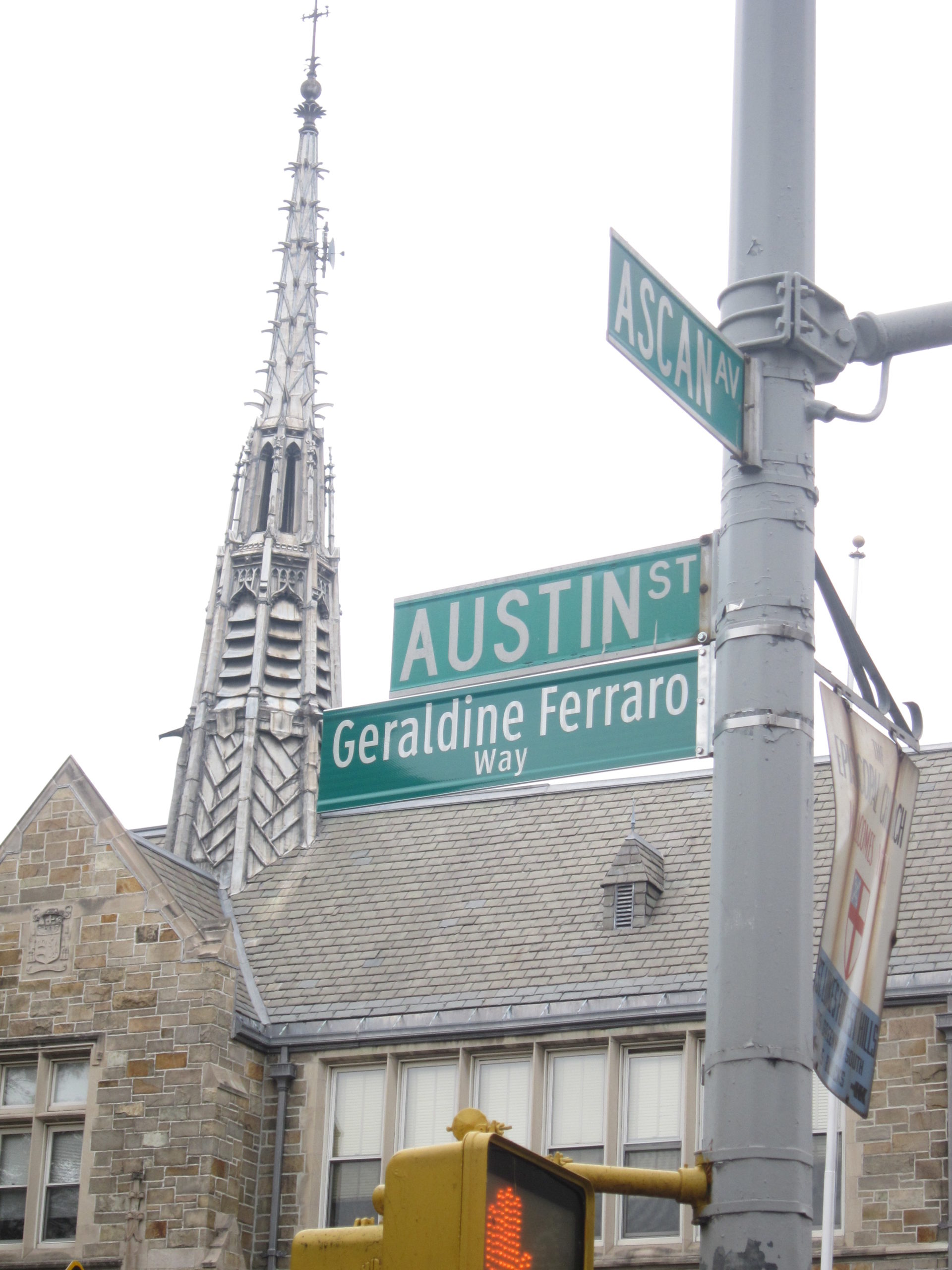
Geraldine Ferraro Way unveiled Oct 2012, alongside historic Ascan Ave & Austin St names, Photo by Michael Perlman.
“All data is public, but our project is bringing it all together for the first time. Thanks to Urban Archive, we are able to present it in the form of an interactive map, where visitors can locate named places in any section of Queens,” Milbrodt explained.
“Since our emphasis as the Queens Memory Project is on people’s lived experiences and personal connections to history, our goal was to create an opportunity through this map for people to share the kinds of details about those who are honored, but not included in official proclamations or historical markers.”
The public can explore the Queens Name Explorer map and share their story and photos at https://nameexplorer.urbanarchive.me.
“Anyone can click the ‘Add/Edit’ button to share a photo, a memory or report a missing or damaged sign online,” she said.
The majority of data is honorary street names after notables of the past century.
“We want their friends, family members and colleagues to share stories and photographs, which will offer a better sense of their personalities, talents and motivations for the pursuits that inspired their neighbors to honor them after their passing,” said Milbrodt.
There are over 700 live entries on the interactive map, and hundreds more will follow in the upcoming weeks.
“I want to get their names live on the site quickly, so people can begin interacting with them by sharing photos and stories,” Milbrodt said.
This project has no expiration date. “We will keep compiling biographical details in the coming months and years,” she added.
Milbrodt also referenced mysteries, since some mapped street names are in need of bios.
She explained, “We are beginning an outreach campaign to public schools and community boards to help us solve these mysteries, but invite anyone with an interest in local history to see if they can contribute.”
To date, a search through some archives retrieved no results for Gerard Place in Forest Hills, but rumor has it that it was named after a farmer.
Local residents wonder how the Rego Park Crescents were named, which consist of Asquith, Boelsen, Cromwell, Dieterle and Ellwell Crescents, followed by Fitchett Street.
Local interactive map entries include a number of sites, but await historic data from the public, as in the case of P.S. 175 The Lynn Gross Discovery School and Annadale Playground, J.H.S. 157 Stephen A. Halsey, P.S. 220 Edward Mandel, P.S. 144 Col. Jeromus Remsen, P.S. 174 William Sidney Mount, J.H.S. 190 Russell Sage, P.S. 206 The Horace Harding School, Ehrenreich-Austin Playground, Samuel Picker Square and Lefrak Memorial Square.
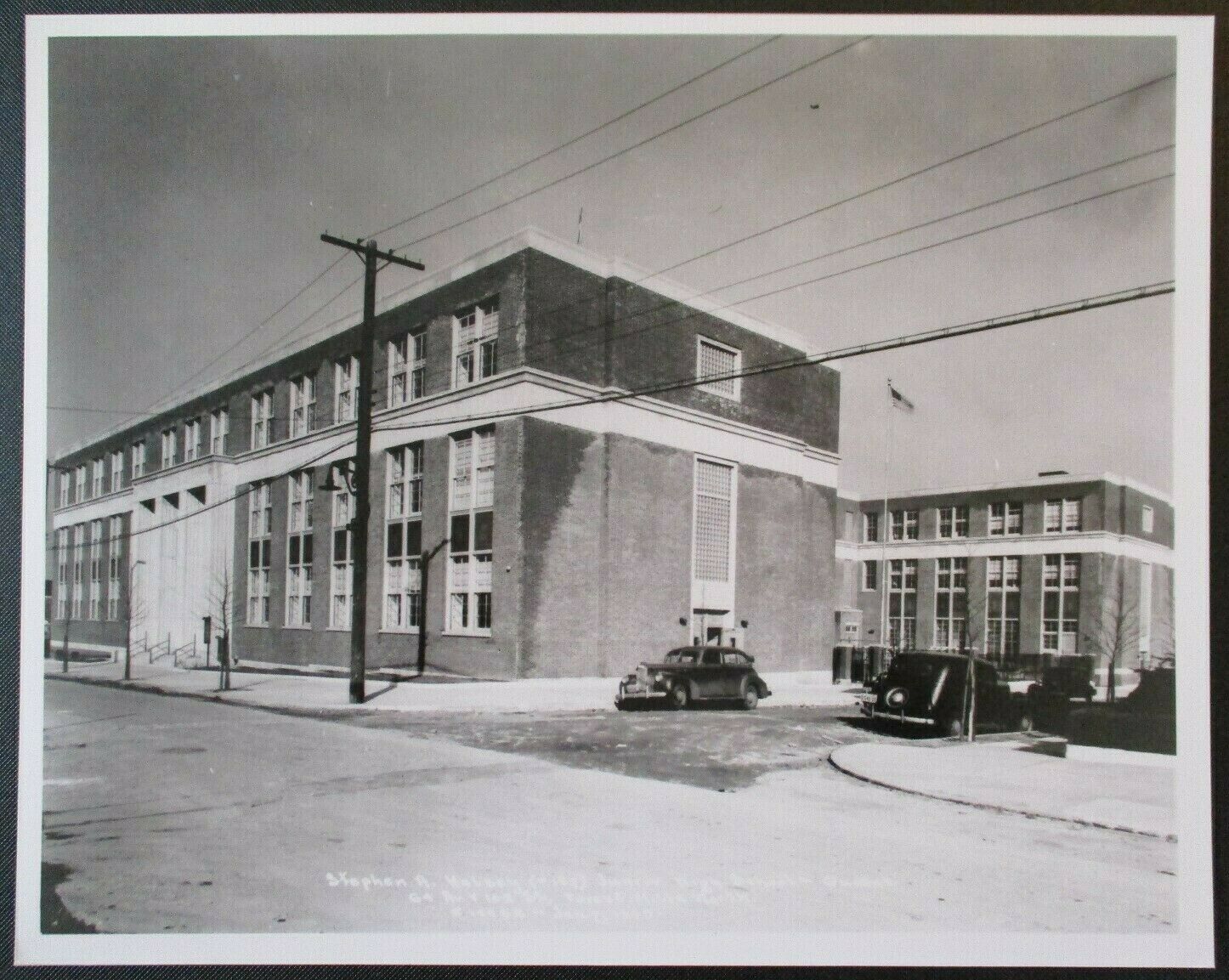
Stephen A. Halsey JHS 157 in 1949.
Bios appear for local sites, but also await public contributions.
They include Rabbi Dr. Asher Murciano Way, MacDonald Park – named after Captain Gerald MacDonald, Federoff Triangle – named after Barnett and Gussie Federoff, William Cooper Walk, Harry Van Arsdale, Jr. Avenue (69th Road), Abe Miller Way, Walter Becker Way, The Ramones Way, Rue Barry Lewis Way, Detective Jeffrey A. Lee Way, Ilyau Aronov Corner, Alex Braginsky Drive and Nathaniel Schneider Triangle.
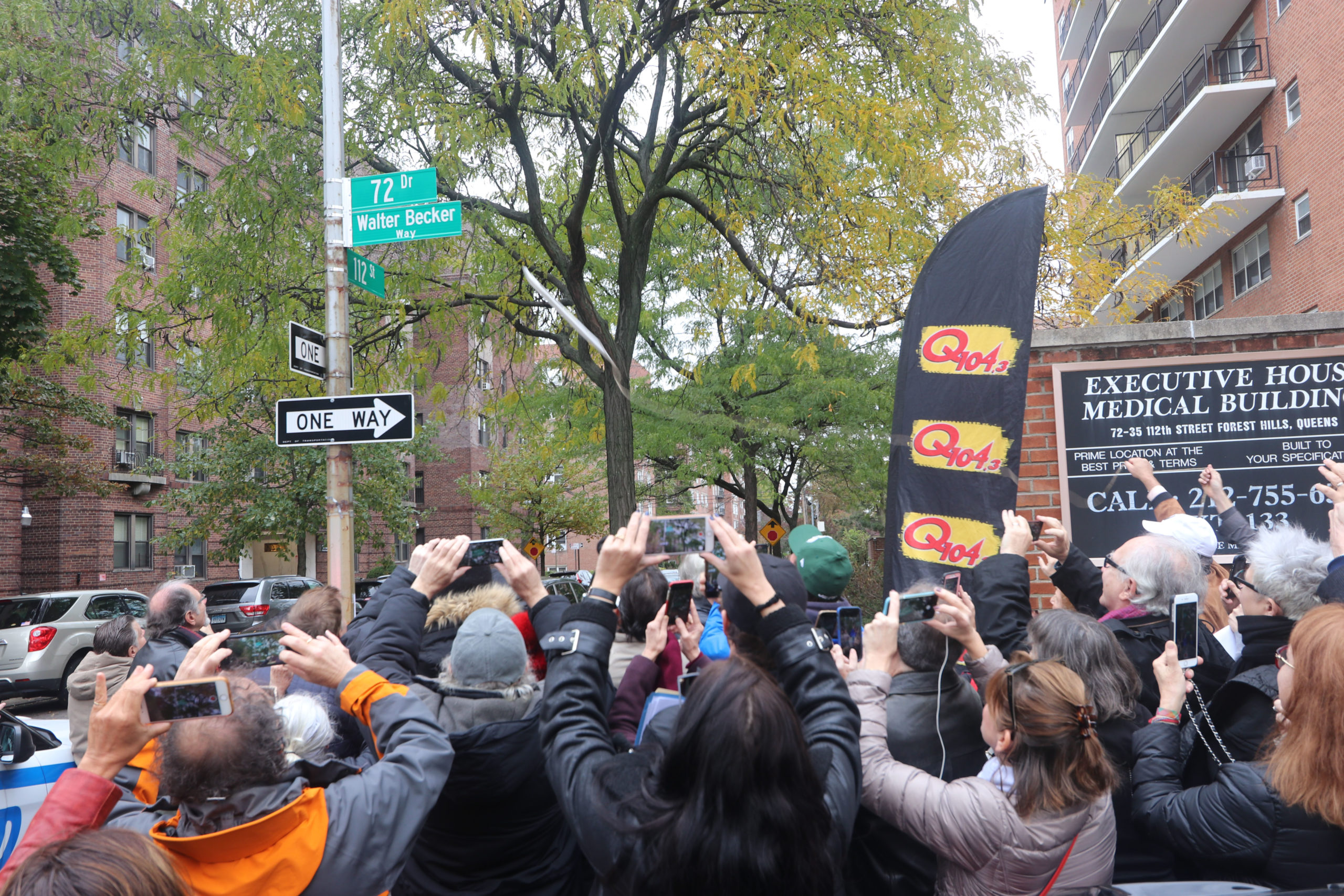
Walter Becker Way unveiled, Oct 2018. Photo by Michael Perlman
Milbrodt shared her passion for the larger picture of history. “History is most interesting when I can learn about larger historical events through the lives of individuals. I think we often fail to see how we are all part of history, how much our circumstances shape our lives and how much each of us can impact the future.”
On Dec. 6, Antos, in partnership with Queens Memory, presented “Naming Queens” at the North Forest Park library branch, which attracted a great turnout.
He demonstrated how residents can have a street co-named and pinpointed notables who are honored locally. A recording will soon be published in the digital archives, and the public can anticipate similar programs over time.
Antos is open to street co-naming collaborations with residents and community organizations.
“In 2015, I worked with Bayside Historical Society to co-name the intersection of Northern Boulevard and Marathon Parkway as Matinecock Way, honoring the history of the Native Americans of Queens. This tribe once resided in villages spanning Little Neck, Flushing, Pomonok, Bayside, College Point, Douglaston and Whitestone.”
Milbrodt cited solid examples of public interaction. A main map entry is for Joe Imp Way in Long Island City, followed by a second entry consisting of an image and detailed story by his widow, Marie Imparato.
“You can see that the photo isn’t perfect, but her contribution is so moving and personal, and it’s precisely what we were hoping for. As for the person who moves to an apartment building on that street a century from now, ‘Joe Imp’ will just be words on a sign, until they come across Marie’s contribution,” she said.
A contributor who has superb local expertise is Ed Wilmarth III, historian of the Broad Channel Volunteer Fire Department, who told the story behind Chief Christian Hoobs Way.
Another example is Susan Latham’s contribution to an entry for Latham Park entry, named after her grandfather.
There have been four walking tours of named places in Forest Hills, Ridgewood, Long Island City and Jamaica, in affiliation with Open House New York in October.
Another public lecture was led by geographer Joshua Jelly-Schapiro, which entailed named places and their role in capturing local history.
On Jan. 4, the team will host an “office hours” event online to address questions about Queens Name Explorer, and will feature additional information on site navigation and the resource’s progress.
The public can visit various online resources, such as the Project Launch clip: https://queenslibrary.aviaryplatform.com/r/3f4kk95b4r and the Latham Park clip: https://youtu.be/rDYKKX38Yos.
For more information, follow @queensmemory on Instagram or visit their Facebook page www.facebook.com/queensmemory.



